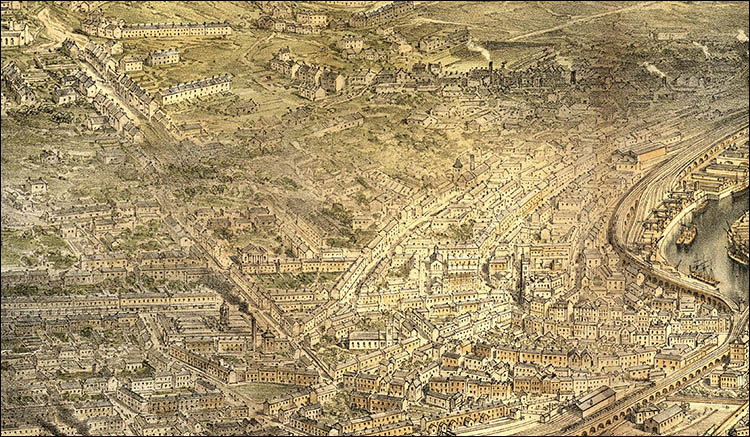Gibbet Hill and Washing Lake, Swansea
Gibbet Hill was once a site of public executions. Water from springs here supplied medieval Swansea with water and replenished Mayhill Washing Lake. Today the pond and slope are a wildlife haven, cared for by the local community.
It’s thought that Gibbet Hill was chosen for hangings because it was clearly visible from much of Swansea town. The authorities held that watching a person’s execution was a powerful deterrent for the public.
William Crach was almost certainly hanged at Gibbet Hill for taking part in Rhys ap Maredudd’s rebellion in 1287 (you can read this story on our web page about Swansea Castle, where William was jailed). Crowds watched the hanging, but William later came back to life. The miracle was examined by the Church authorities. Swansea historian Andrew Dulley translated the account of the investigation which is in the Vatican archives in Rome. The witness statements are consistent with Gibbet Hill being the execution place.
 The drawing, courtesy of West Glamorgan Archive Service, is from an 1881 lithograph. It shows the relationship between Gibbet Hill (top left) and the original town (right).
The drawing, courtesy of West Glamorgan Archive Service, is from an 1881 lithograph. It shows the relationship between Gibbet Hill (top left) and the original town (right).
As Georgian gentlemen built lofty mansions in the Mount Pleasant area, Gibbet Hill became North Hill, a less gruesome name! The old name remained in use much longer. Gibbethill is marked on the 1884 Ordnance Survey map and Gibbethill Road (now North Hill Road) on the 1900 map. Gibbet Hill was officially part of the Swansea police’s western division in 1914.
The Washing Lake would have been useful for laundering clothes. The stream flowing into it never runs dry. As well as supplying the medieval town, the stream washed sewage from the town ditch, outside the town walls. In the 18th century the stream supplied a large tannery, where the Kingsway is now.
The Victorians built small reservoirs on the hillside as the town’s population grew. The water supplied the workhouse, built on the lower part of Gibbet Hill in the 1860s, and flowed towards town in cast-iron pipes alongside Bryn Syfi Terrace.
The area of the hill which was never built over forms part of the Hillside wildlife corridor, between Bryn y Don Park and Rosehill Quarry. The local friends group maintains the paths and pond and manages a community food garden. Follow the link below for details.
With thanks to Andrew Dulley, of West Glamorgan Archive Service
Website of the Friends of Mayhill Washing Lake and Community Food Garden (Facebook)
Website of West Glamorgan Archive Service


